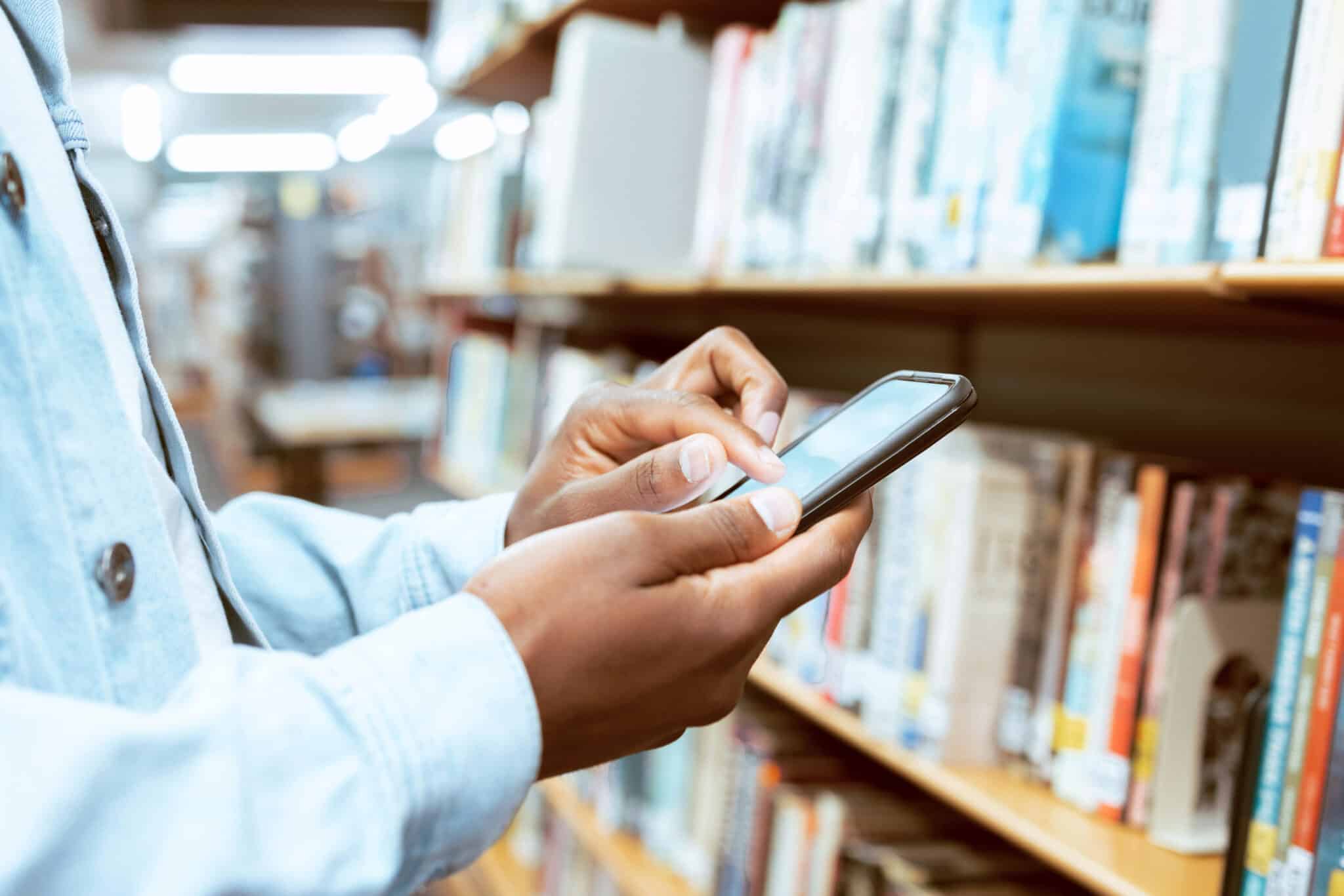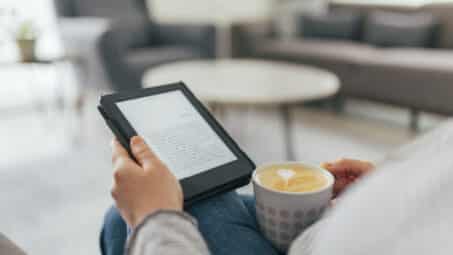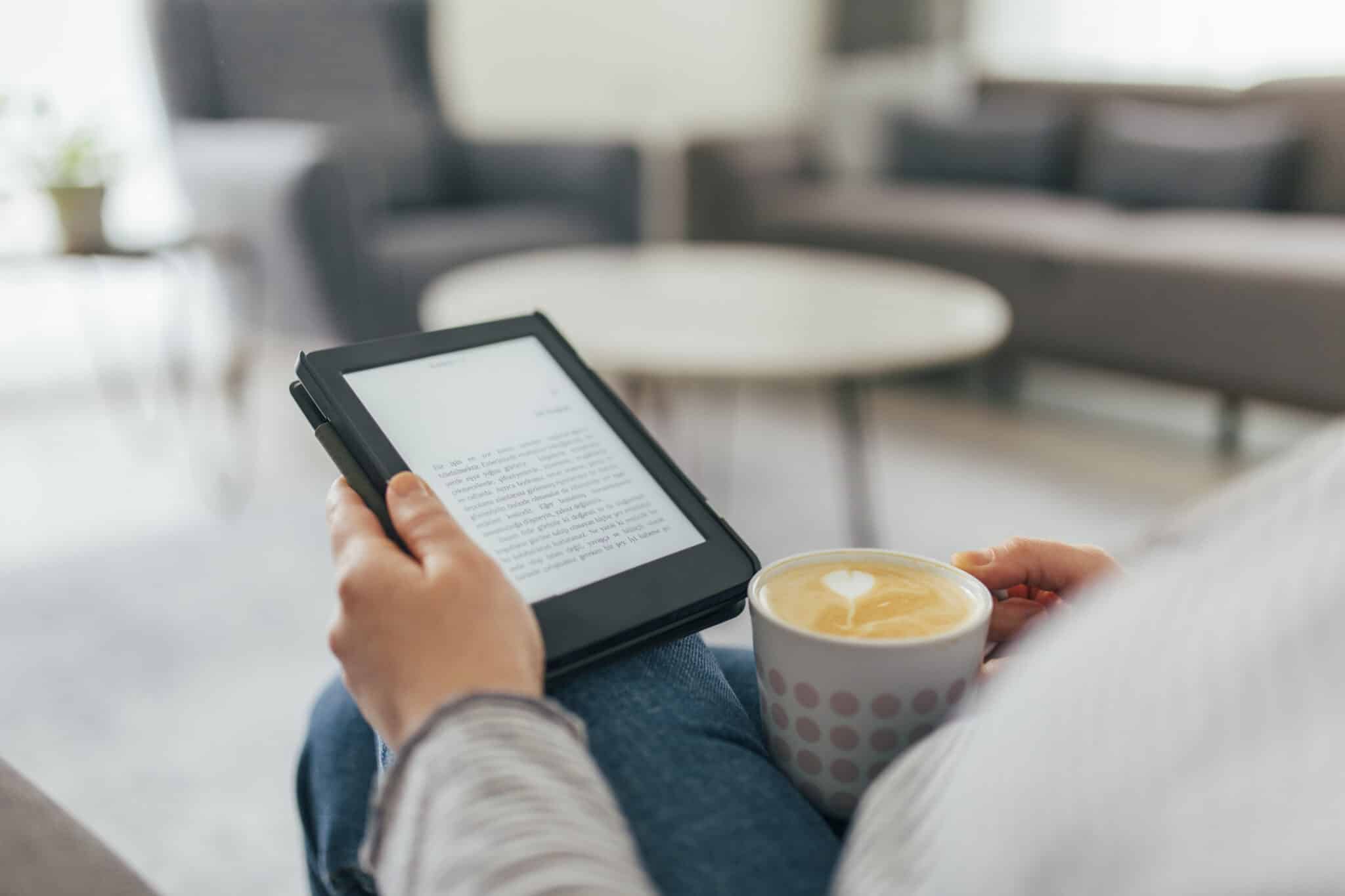Finding time to visit the library can be tough, even when you want to keep up with your TBR (to-be-read) list. Here’s where using a library app can help. The app from your local library brings the library to your smartphone with a digital version of its free services. As long as you have a valid library card, you can access thousands of ebooks and audiobooks through a library app.
So, whether you’re a regular or occasional reader, a library app can help you knock out your TBR list from the comfort of home. Here’s all you need to know about library apps.
What Is a Library App?
A library app helps you access digital services so you can keep reading wherever you are.
There are two categories of library apps:
Local Library Apps
Some libraries have their own apps that allow you to reserve physical books, pay dues, or manage your library card. Examples include MARINet for Marin County in California or the NYPL App for the New York Public Library system. While these library apps may offer a limited amount of digital content, their main purpose is to manage the services with your local library.
Companion Library Apps
Companion library apps are third-party apps that you use via your library card. If your library has a relationship with these apps, you can access ebooks, audiobooks, magazines, and sometimes even movies and music.
Library apps digitize borrowing, so you can access reading materials without having to go to the library. Each library system offers its own library apps, so you’ll need to check with your local library to see what they offer.
Benefits of Using a Library App
Here are some of the reasons a library app is a useful tool for book lovers:
Convenience: Access From Anywhere, at Anytime
One of the greatest benefits of a library app is convenience because you don’t need to go the library to borrow books or other materials.
With just a few taps on your smartphone or tablet, you can:
- Browse collections: Discover new books, audiobooks, and magazines from the comfort of your home
- Borrow instantly: Check out digital items as soon as they become available without waiting in line
- Read or listen offline: Download what you borrow to enjoy offline
The digital content is a wonderful option if you have mobility issues, if you live far from a library, or if your schedule makes it hard to get to the library while it’s open. And even if you can visit the library, being able to reserve books through your library app is a game changer.
Variety: A Wide Range of Resources
You may not have realized that your library has more than books. Magazines, movies, and even music are often part of many library collections.
Accessing your library’s offerings becomes easier with a local library app, while companion library apps give you access to a much wider collection of content:
- Ebooks & audiobooks: Enjoy thousands of titles across different genres and formats
- Magazines & newspapers: Stay up-to-date with current issues of popular magazines and newspapers
- Movies & music: Some apps even offer streaming options for films and music albums
- Classes: Select companion apps offer classes from experts, allowing you to expand your learning
This variety means you’re sure to find something that interests you, whether you’re into fiction, non-fiction, or multimedia content.
Cost Savings: Free Resources With a Library Card
Another important benefit of a library app is cost. You only need a valid library card to access these resources for free. This makes reading more affordable by not having to buy books or subscribe to paid services. Plus, there are no late fees for digital items since they return automatically at the end of the borrowing period. For physical items, many library apps allow you to check due dates, helping you avoid late returns.
Easy Management of Your TBR List
Additionally, keeping track of your reading list becomes simpler with a library app. Features like wish lists, holds, and borrowing history help you manage what you’ve read and what’s next on your TBR. You can also explore physical offerings from your library’s app or large digital collections from a companion library app.
Finding the Right Library App for You
Every library system offers different apps. But several library apps have become popular due to their features and user-friendly interfaces.
Here are a few of the most common library apps:
- Libby is an easy-to-use option for borrowing ebooks and audiobooks from your local library
- Hoopla provides instant access to ebooks, audiobooks, movies, music, and TV shows
- cloudLibrary offers a huge collection of ebooks and audiobooks with features like reminders and current checkouts
- Freegal Music allows you to stream and download music legally using your library card
- Kanopy focuses on streaming movies and documentaries, especially independent films and educational content
Check what apps your local library supports by visiting your library’s website or asking a librarian.
Consider Your Reading Preferences
Many libraries offer multiple companion apps. And your reading habits will influence which app is best for you. If you mostly read ebooks, look for apps with big ebook collections and customizable reading settings like changing the text size or font.
If you prefer audiobooks, choose an app with a wide range of audiobooks and good playback controls.
Compatibility With Devices
Ensure that the app you choose is compatible with your devices. Most library apps are available on Apple’s App Store and Google Play. Additionally, some apps, like Libby, are also accessible via web browsers on Windows or Mac computers.
Try Before You Commit
Most library apps are free to download and use with a valid library card. So, you could download multiple apps and test them before deciding which works best for you.
By considering your library system’s offerings, reading preferences, and device compatibility, you can find the ideal library app to help you manage your reading list.
How To Get Started With a Companion Library App
Getting started with a library app is straightforward. First, find what apps your library offers. Usually, your library’s website will have a list available. But if you have trouble finding it, you can always ask a librarian.
Then, once you know which library apps you have access to, you’ll need to download them onto your device. Search for the app’s name in your device’s app store. Most library apps are available on iPhones and iPads via the Apple App Store and on Android phones using the Google Play store.
Tap the download button, then follow the installation prompts on your screen. Don’t forget that you can access some library apps via web browsers on Windows, Mac, and Chromebooks if you prefer using a computer.
Once a library app is installed, setting up your account is simple:
- Open the app: Launch the app from your home screen.
- Find your library: Follow the prompts to locate your local public library. You can search by name, or some apps can guess based on your location.
- Sign In: Enter your library card number and PIN when prompted. If you need a library card, visit your local library’s website or physical location to get one.
Now that you set up your account, you can start exploring the app, borrowing books, and managing your reading list.
How To Use Your Library App
Once you set up the library app, take the time to get familiar with how the app works.
Customizing Your Settings
You can customize the app by setting alerts for due dates, new holds, and other updates. Some apps even let you adjust text size, background color, and font style as you prefer. For audiobooks, you may even be able to change playback speed and set sleep timers.
Searching for & Borrowing Books
Finding and borrowing books is simple in a library app. Use keywords like author names or book titles to quickly find what you’re looking for. Helpfully, these apps allow you to filter your search by genre, availability, or format. Tap the “Borrow” button to check out available e-books immediately. But if the title is on hold, you can still place a reservation.
Reading & Listening in the App
It’s easy to enjoy your borrowed content directly within the app. All you have to do is open ebooks in the app’s reader, where you can adjust text settings, add bookmarks, and highlight passages.
Then, you can listen to audiobooks within the library app. Luckily, most offer user-friendly playback controls, such as changing reading speed and setting sleep timers.
Managing Your Loans
A library app typically also has tools to help you manage the books and media you’ve borrowed. For example, you can keep track of all your digital loans in the app and access all currently borrowed items under the “Loans” section. And if your local library’s app allows it, you can keep an eye on your physical items’ due dates and pay any late fees remotely.
A library app also makes it easy to quickly scan your due dates at a glance and renew items if needed. Or, you may return finished ebooks early to free up borrowing capacity.
Embrace the Digital Library Experience
A library app is a fantastic way to manage and enjoy your reading list without stepping into a physical library. It offers the convenience of borrowing books anytime, anywhere, and the benefit of free resources.
By choosing the right app and learning its features, you can easily access your local library resources and start crossing books off that TBR list.





